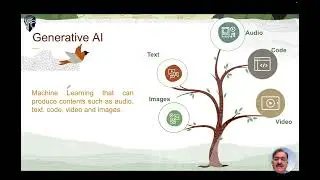Jaeger Distributed Tracing System How it Works | Jaeger Architecture
#Jaeger Distributed Tracing System How it Works | Jaeger Architecture
Jaeger Components
Jaeger client libraries, Agent, Collector, Query, Ingester, APIs and Sampling
Has the following components to do tracing collection and visualization:
Application Code
Applications can use any of the tracing API and tracer client to start instrumenting the traces, span, context, tags and logs for every request call.
The tracer client is a library/package that is packaged in the code. Tracer Agent – used for pushing the traces generated by the application tracer client.
Components ---
Jaeger Tracer Collector
used to collect the traces pushed by the agent from each trace client (application). Storage – The trace collector stores the traces in a database for further indexing and querying the traces. API – This component is used to query the traces and span to display in the UI. UI – The UI is a web interface to visualize and display the traces, span, context, tag and logs along with search and dependencies. Jaeger is made up of several components that work together to collect, store, and display tracing data.
Jaeger Client Libraries:
Language-specific implementations of the OpenTracing API. Tracer, Reporter, instrumented application, client libraries- Jaeger clients are language specific implementations of the OpenTracing API. They can be used to instrument applications for distributed tracing either manually or with a variety of existing open source frameworks, such as Camel (Fuse), Spring Boot (RHOAR), MicroProfile etc.
Jaeger Span
A span represents a logical unit of work in Jaeger that has an operation name, the start time of the operation, and the duration. Spans may be nested and ordered to model causal relationships.
Jaeger Trace
A trace is a data/execution path through the system, and can be thought of as a directed acyclic graph of spans.
Jaeger Agent :
A network daemon that listens for spans sent over UDP, which it batches and sends to the collector. It is designed to be deployed to all hosts as an infrastructure component. The agent abstracts the routing and discovery of the collectors away from the client.
Server Queue, Processor Workers:
The agent is meant to be placed on the same host as the instrumented application. This is typically accomplished by having a sidecar in container environments like Kubernetes.
Jaeger Collector:
The Jaeger collector receives traces from Jaeger agents and runs them through a processing pipeline. Currently, the pipeline validates traces, indexes them, performs transformations, and finally, stores them. Jaeger’s storage is a pluggable component which currently supports Cassandra, Elasticsearch, and Kafka.
Queue, Workers - Similar to the Agent, the Collector is able to receive spans and place them in an internal queue for processing.
Jaeger Query:
A service that retrieves traces from storage and hosts a UI to display them.
When service A receives a request that contains no tracing information, Jaeger tracer will start a new trace, assign it a random trace ID, and make a sampling decision based on the currently installed sampling strategy. The type of sampling can be selected via sampler.type and sampler.param properties.
Jaeger libraries support the following samplers:
Constant (sampler.type=const) sampler always makes the same decision for all traces.
All traces (sampler.param=1) or none of them (sampler.param=0).
Probabilistic (sampler.type=probabilistic) sampler makes a random sampling decision with the probability of sampling equal to the value of sampler.param property.
Rate Limiting (sampler.type=ratelimiting) sampler uses a leaky bucket rate limiter to ensure that traces are sampled with a certain constant rate.
Remote (sampler.type=remote, default) sampler consults Jaeger agent for the appropriate sampling strategy to use in the current service.
jaeger,jaeger tracing,jaeger ui,why jaeger,getting started with jaeger,jaeger kubernetes tutorial,jaeger intro,jaeger agent,jaeger docker,architecture of application,jaeger kubernetes example,jaeger collector,configure jaeger with elasticsearch,jaeger client,jaeger with kubernetes,jaeger tutorial,jaeger kubernetes setup,jaeger k8s
Connect with me
📺 Please subscribe for more awesome videos: / @theskillpedia2
🐦 Follow me on twitter: / theskillpedia
🖼 Follow me in Facebook for tips, tricks, behind the scene pictures, and personal stories: / theskillpedia
🏢Connect with me in LinkedIN: / rnsangwan
👩🎓*My Courses - Message me at LinkedIN for discounts**
Link for SAP ASE DBA course: https://www.theskillpedia.com/courses... Link for Openstack Cloud Administration Course: https://www.theskillpedia.com/courses...
Смотрите видео Jaeger Distributed Tracing System How it Works | Jaeger Architecture онлайн, длительностью часов минут секунд в хорошем качестве, которое загружено на канал The SkillPedia 01 Январь 1970. Делитесь ссылкой на видео в социальных сетях, чтобы ваши подписчики и друзья так же посмотрели это видео. Данный видеоклип посмотрели 8,424 раз и оно понравилось 447 посетителям.































